#ricerca
-
 April 8, 2024Visiting in Trentino 2024 Call: open for applicationsThe research hospitality program promoted by the Autonomous Province of Trento aims at providing support to highly qualified and experienced researchers and professors, currently working abroad, for study activities to be carried out in/with Trentino research organizations
April 8, 2024Visiting in Trentino 2024 Call: open for applicationsThe research hospitality program promoted by the Autonomous Province of Trento aims at providing support to highly qualified and experienced researchers and professors, currently working abroad, for study activities to be carried out in/with Trentino research organizations -
 March 22, 2024Tourism, water and energy: three key elements for sustainabilityMarch 22 marks World Water Day, established by the United Nations in 1992. This year's theme is the link between water and climate change, an issue that deeply engages Fondazione Bruno Kessler's agenda. Let's see how.
March 22, 2024Tourism, water and energy: three key elements for sustainabilityMarch 22 marks World Water Day, established by the United Nations in 1992. This year's theme is the link between water and climate change, an issue that deeply engages Fondazione Bruno Kessler's agenda. Let's see how. -
 February 10, 2024World Artificial Intelligence Festival: FBK among representatives of the Trentino system in CannesThe French Riviera will be hosting the 2024 World Artificial Intelligence Cannes Festival, one of the world's most important fairs on artificial intelligence, February 8 through 10, 2024.
February 10, 2024World Artificial Intelligence Festival: FBK among representatives of the Trentino system in CannesThe French Riviera will be hosting the 2024 World Artificial Intelligence Cannes Festival, one of the world's most important fairs on artificial intelligence, February 8 through 10, 2024. -
 November 30, 2023The potential of incentivized savings programs in combating education povertyInterim findings of the FBK-IRVAPP evaluation presented at the final conference of WILL "Educating for the Future"
November 30, 2023The potential of incentivized savings programs in combating education povertyInterim findings of the FBK-IRVAPP evaluation presented at the final conference of WILL "Educating for the Future" -
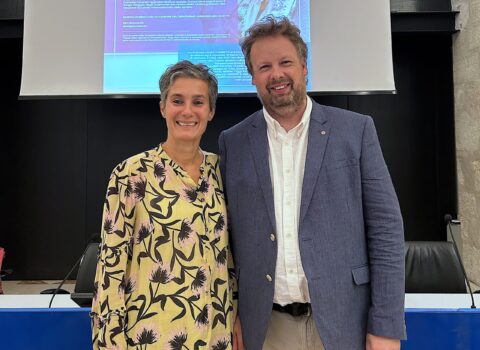 November 10, 202330 years of ECT*A public event with scientist Laura Fabbietti dedicated to the European Center for Theoretical Studies in Nuclear Physics was held at FBK
November 10, 202330 years of ECT*A public event with scientist Laura Fabbietti dedicated to the European Center for Theoretical Studies in Nuclear Physics was held at FBK -
 September 25, 2023The “treat” cultureIn this article that was published in the "Il T" newspaper on September 21, Claudio Ferlan analyzes the widespread and often unfounded fear of conspiracy, typical of a large part in the Italian sports press.
September 25, 2023The “treat” cultureIn this article that was published in the "Il T" newspaper on September 21, Claudio Ferlan analyzes the widespread and often unfounded fear of conspiracy, typical of a large part in the Italian sports press. -
 July 27, 2023Passion and research. FBK Magazine dedicates a space to talking about sports from different perspectivesExplore the marriage of sports, research and passion in FBK Magazine. Discover the relationship of those who work at Fondazione Bruno Kessler with sports, balancing ethics and work. Look into the importance of data in sports. Explore the unique relationship between sports and mountains in the run-up to the upcoming Winter Olympics. An open, engaging and growing worksite.
July 27, 2023Passion and research. FBK Magazine dedicates a space to talking about sports from different perspectivesExplore the marriage of sports, research and passion in FBK Magazine. Discover the relationship of those who work at Fondazione Bruno Kessler with sports, balancing ethics and work. Look into the importance of data in sports. Explore the unique relationship between sports and mountains in the run-up to the upcoming Winter Olympics. An open, engaging and growing worksite. -
 December 6, 2022Translating research. From complex to simple, from incomprehensible to clickable"Translation is not only about making research more understandable; it is also about presenting research in digestible, clickable formats that are likely to stand out"
December 6, 2022Translating research. From complex to simple, from incomprehensible to clickable"Translation is not only about making research more understandable; it is also about presenting research in digestible, clickable formats that are likely to stand out" -
 July 13, 2022Designing innovative teaching: the ENCORE project is kicking offCoordinated by the University of Pisa, it involves European universities, institutions and companies. FBK is among the partners of the initiative thanks to the contribution of Antonio Bucchiarone (MoDiS) and Gianluca Schiavo (i3)
July 13, 2022Designing innovative teaching: the ENCORE project is kicking offCoordinated by the University of Pisa, it involves European universities, institutions and companies. FBK is among the partners of the initiative thanks to the contribution of Antonio Bucchiarone (MoDiS) and Gianluca Schiavo (i3) -
 April 11, 2022War and energy crisis: risks and opportunitiesGiancarlo Sciascia talks with Luigi Crema, director of Fondazione Bruno Kessler's SUSTAINABLE ENERGY research center.
April 11, 2022War and energy crisis: risks and opportunitiesGiancarlo Sciascia talks with Luigi Crema, director of Fondazione Bruno Kessler's SUSTAINABLE ENERGY research center. -
 March 9, 2021The Human Resources Strategy for ResearchersFBK implements the principles of the European Charter for Researchers. The outcome of the evaluation by the European Commission was positive and FBK was awarded again the HR Excellence in Research certificate
March 9, 2021The Human Resources Strategy for ResearchersFBK implements the principles of the European Charter for Researchers. The outcome of the evaluation by the European Commission was positive and FBK was awarded again the HR Excellence in Research certificate -
 November 20, 2020Handmaids coming out of the shadows? The professional dimension of women over the centuriesConsiderations on the female professional dimension with Anna Bellavitis and Melania Mazzucco
November 20, 2020Handmaids coming out of the shadows? The professional dimension of women over the centuriesConsiderations on the female professional dimension with Anna Bellavitis and Melania Mazzucco -
 October 27, 2020A new effort not to leave idle prior results obtained in EU projectsA new effort not to leave idle prior results obtained worldwide.
October 27, 2020A new effort not to leave idle prior results obtained in EU projectsA new effort not to leave idle prior results obtained worldwide. -
 September 25, 2020THE “CHE ARIA” PROJECT AT THE “GIOVANI RICERCATORI CERCANSI” (YOUNG RESEARCHERS NEEDED) CONTEST: EXCELLENT RANKING FOR THE GALILEI HIGH SCHOOLThree students from the Trento-based high school for science have ranked second in the "basic research" category with a project based on a school-to-work experience at FBK
September 25, 2020THE “CHE ARIA” PROJECT AT THE “GIOVANI RICERCATORI CERCANSI” (YOUNG RESEARCHERS NEEDED) CONTEST: EXCELLENT RANKING FOR THE GALILEI HIGH SCHOOLThree students from the Trento-based high school for science have ranked second in the "basic research" category with a project based on a school-to-work experience at FBK -
 September 16, 2020“PRINCIPIA”, a new peer-review platform is hereA group of Italian researchers has advanced a chainblock-based platform, which aims to reform the scientific publications system, restoring the centrality of academia over journal publishers
September 16, 2020“PRINCIPIA”, a new peer-review platform is hereA group of Italian researchers has advanced a chainblock-based platform, which aims to reform the scientific publications system, restoring the centrality of academia over journal publishers -
 August 31, 2020“AI for Future Italy”: challenges of the present and indications for seizing the opportunities availableAn open document containing discussions, proposals and recommendations for Italian research in Artificial Intelligence and the connection with institutions, industry and society. Organized by the National Laboratory of Artificial Intelligence and Intelligent Systems of the National Interuniversity Consortium for Informatics
August 31, 2020“AI for Future Italy”: challenges of the present and indications for seizing the opportunities availableAn open document containing discussions, proposals and recommendations for Italian research in Artificial Intelligence and the connection with institutions, industry and society. Organized by the National Laboratory of Artificial Intelligence and Intelligent Systems of the National Interuniversity Consortium for Informatics -
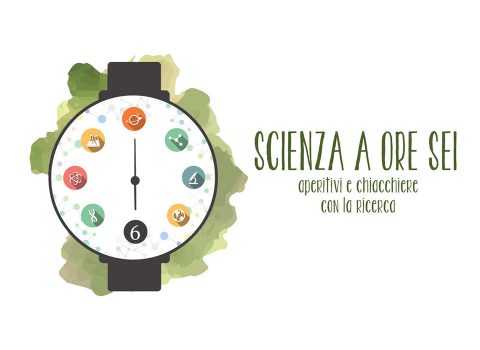 July 1, 2020The 2020 edition of “Scienza ad ore sei” has wrapped upThe five events of the science café series can still be viewed on Youtube
July 1, 2020The 2020 edition of “Scienza ad ore sei” has wrapped upThe five events of the science café series can still be viewed on Youtube -
 June 15, 2020Irrefutable uncertaintiesA study published in "Nature", with two FBK researchers involved, investigated the extent to which different research groups can reach different conclusions by analyzing the same data
June 15, 2020Irrefutable uncertaintiesA study published in "Nature", with two FBK researchers involved, investigated the extent to which different research groups can reach different conclusions by analyzing the same data -
 April 30, 2020COVID-19. Social distancing measures have allowed China to stop the spreadThe study of an international team led by the Bruno Kessler Foundation of Trento and the Fudan University of Shanghai has been published in the journal Science
April 30, 2020COVID-19. Social distancing measures have allowed China to stop the spreadThe study of an international team led by the Bruno Kessler Foundation of Trento and the Fudan University of Shanghai has been published in the journal Science -
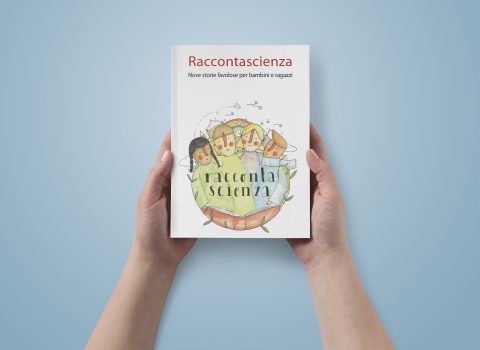 December 20, 2019Raccontascienza: ecco il libro che parla di scienza ai più piccoliUn progetto letterario della Fondazione Bruno Kessler per spiegare la scienza ai più piccoli attraverso brevi racconti
December 20, 2019Raccontascienza: ecco il libro che parla di scienza ai più piccoliUn progetto letterario della Fondazione Bruno Kessler per spiegare la scienza ai più piccoli attraverso brevi racconti -
December 13, 2019What influences the selection of a Nobel laureate?The study by FBK researchers Riccardo Gallotti and Manlio De Domenico examined the data of 17,000 nominees between 1901 and 1965 and was published in Nature's "Scientific Reports" journal
-
November 4, 2019The Tokyo Institute of Technology visited FBKThe meeting with the Japanese delegation was an opportunity for an exchange of views on research areas and projects and to identify common topics for possible collaborations
-
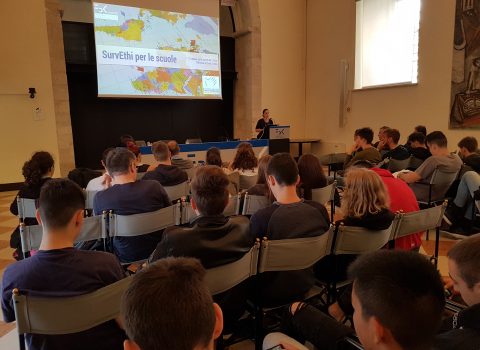 October 30, 2019SurvEthi for schoolsThe new project of the FBK School-to-Work Program that will involve five high schools in applied research in health has ebeen launched
October 30, 2019SurvEthi for schoolsThe new project of the FBK School-to-Work Program that will involve five high schools in applied research in health has ebeen launched -
October 3, 2019Le relazioni scientifiche si nutrono di umanità | Massimo Rospocher | Mobility StoriesL'esperienza di mobilità del ricercatore dell'Istituto Italo-Germanico della Fondazione Bruno Kessler, in Australia per lavorare alla traduzione inglese del suo libro
-
September 5, 2019Human-centered artificial intelligenceFondaziobe Bruno Kessler in the "Humane AI" consortium that should outline the European strategy for human-centered artificial intelligence
-
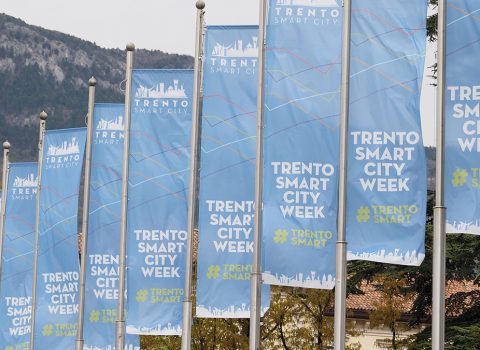 September 4, 2019FBk research and projects meet the community at Trento Smart City WeekLabs, seminars and workshops to get to learn more about the work of researchers and the solutions developed to enhance the quality of life of citizens
September 4, 2019FBk research and projects meet the community at Trento Smart City WeekLabs, seminars and workshops to get to learn more about the work of researchers and the solutions developed to enhance the quality of life of citizens -
 July 4, 2019Il fondo di trasferimento tecnologico “Progress Tech Transfer” ora più vicino alla ricerca e all’innovazione del TrentinoGrazie ad un recente accordo quadro sottoscritto con HIT-Hub Innovazione Trentino, è stato presentato il principale fondo di investimento nazionale sulla sostenibilità ambientale ed energetica
July 4, 2019Il fondo di trasferimento tecnologico “Progress Tech Transfer” ora più vicino alla ricerca e all’innovazione del TrentinoGrazie ad un recente accordo quadro sottoscritto con HIT-Hub Innovazione Trentino, è stato presentato il principale fondo di investimento nazionale sulla sostenibilità ambientale ed energetica -
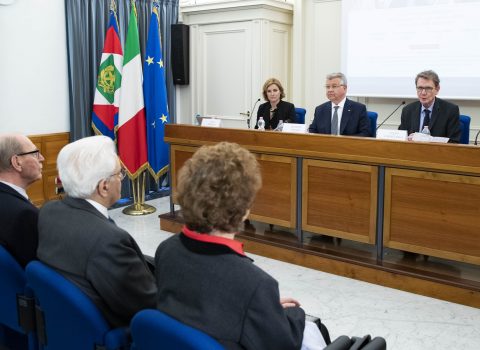 April 8, 2019FBK brings the letters of Alcide de Gasperi onlineWith a work of over two years, still ongoing, the Digital Humanities Unit has created a large digital archive of letters written and received by the statesman from Trentino.
April 8, 2019FBK brings the letters of Alcide de Gasperi onlineWith a work of over two years, still ongoing, the Digital Humanities Unit has created a large digital archive of letters written and received by the statesman from Trentino. -
March 28, 2019Claudio Ferlan wins a grant at Boston CollegeThe FBK-ISIG researcher was selected with a writing project that investigates the relationship between religion and food
-
February 15, 2019A Research Unit to fight mosquitoes and invasive species has been createdFondazione Bruno Kessler and Fondazione Edmund Mach against the spread of alien species
-
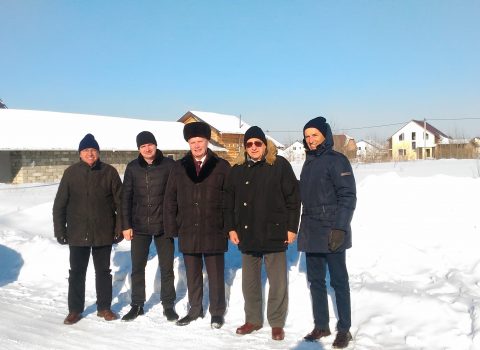 February 11, 2019The Trentino Research System in Russia for the construction of the futureFBK is part of the IsolMAX project that will build and monitor for five years a building designed to withstand extreme weather conditions in Siberia
February 11, 2019The Trentino Research System in Russia for the construction of the futureFBK is part of the IsolMAX project that will build and monitor for five years a building designed to withstand extreme weather conditions in Siberia -
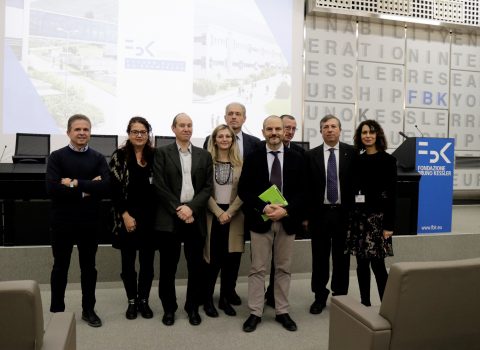 January 7, 2019FBK and Ferrara together for the development of Smart CitiesSigned a memorandum of understanding with the Municipality of Ferrara and the Provincial Development Agency Sipro Spa
January 7, 2019FBK and Ferrara together for the development of Smart CitiesSigned a memorandum of understanding with the Municipality of Ferrara and the Provincial Development Agency Sipro Spa -
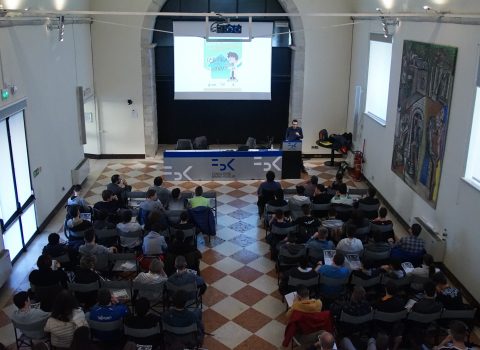 November 16, 2018“La bottega della scienza”: Students and Citizens Protagonists of ResearchThe new Alternating School and Work Program project designed by FBK, which aims to conduct research projects based on proposals from citizens officially started with a kick-off meeting
November 16, 2018“La bottega della scienza”: Students and Citizens Protagonists of ResearchThe new Alternating School and Work Program project designed by FBK, which aims to conduct research projects based on proposals from citizens officially started with a kick-off meeting -
September 24, 2018A rather special boutiqueWe visited the "Boutique des sciences" in Lyon, one of the most interesting landmarks in the European landscape of "Science Shops", organizations that carry out scientific research on behalf of civil society
-
September 18, 2018Investing in research to innovate social enterprisesWe interviewed Flaviano Zandonai, Ezio Manzini and Francesco Profumo, protagonists at the 16th Workshop on Social Enterprise
-
 June 22, 2018Webvalley 2018: Looking for new solutions in the fight against pediatric cancerThere are eighteen of them. They come from all over Italy and the US: the young budding researchers who together with FBK experts are developing a new solution of Artificial Intelligence for the neuro-oncological patients of the Bambino Gesù of Rome.
June 22, 2018Webvalley 2018: Looking for new solutions in the fight against pediatric cancerThere are eighteen of them. They come from all over Italy and the US: the young budding researchers who together with FBK experts are developing a new solution of Artificial Intelligence for the neuro-oncological patients of the Bambino Gesù of Rome. -
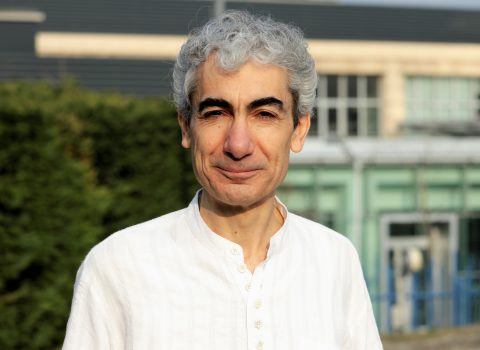 April 17, 2018From research to business, Mauro Cettolo’s storyAfter 26 years in the Foundation, the HLT-MT researcher began a period of secondment in the company. "A decision not taken lightly, but it seemed like a good opportunity to try something else"
April 17, 2018From research to business, Mauro Cettolo’s storyAfter 26 years in the Foundation, the HLT-MT researcher began a period of secondment in the company. "A decision not taken lightly, but it seemed like a good opportunity to try something else" -
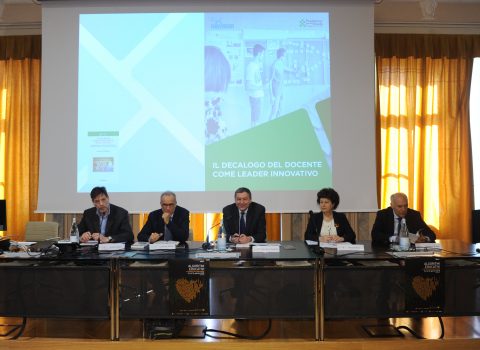 April 14, 2018Leadership for innovation in schoolsThe book dedicated to change in schools through the training of teachers and principals and to digital programs was presented at the EDUCA Festival
April 14, 2018Leadership for innovation in schoolsThe book dedicated to change in schools through the training of teachers and principals and to digital programs was presented at the EDUCA Festival -
 August 9, 2017HEALTH AND IT IN THE SERVICE OF CITIZENSFBK research will be aired on RAI3 on Sunday, August 13, in the "VivinTrentino" show
August 9, 2017HEALTH AND IT IN THE SERVICE OF CITIZENSFBK research will be aired on RAI3 on Sunday, August 13, in the "VivinTrentino" show -
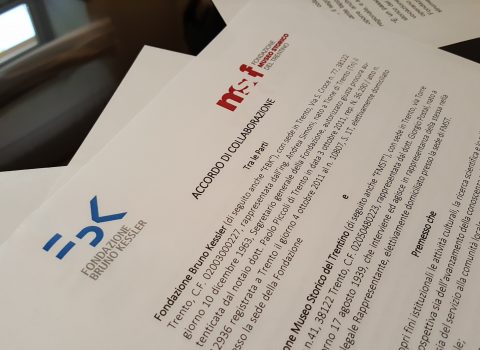 August 4, 2017COLLABORATION AGREEMENT BETWEEN FBK AND FONDAZIONE MUSEO STORICO DEL TRENTINO SIGNED TODAYThe long-standing relationship between the two institutions has been strengthened
August 4, 2017COLLABORATION AGREEMENT BETWEEN FBK AND FONDAZIONE MUSEO STORICO DEL TRENTINO SIGNED TODAYThe long-standing relationship between the two institutions has been strengthened -
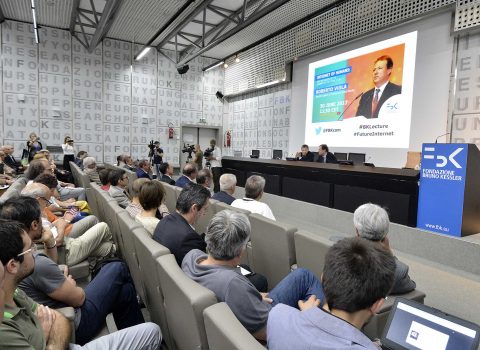 June 30, 2017How we would like the internet of the future to be. ROBERTO VIOLA AT THE BRUNO KESSLER LECTUREWhat great opportunities does the Internet offer? What concerns does it raise? How can Europe contribute to the development of a more human being-centered Internet?
June 30, 2017How we would like the internet of the future to be. ROBERTO VIOLA AT THE BRUNO KESSLER LECTUREWhat great opportunities does the Internet offer? What concerns does it raise? How can Europe contribute to the development of a more human being-centered Internet? -
 June 16, 2017Ready to start? Here’s the Webvalley 2017 team12 Italians, of which 6 from Trentino, and 6 Americans are the protagonists of the 17th edition of WebValley, which will open the lab on Sunday, June 18, in Casez, Valle di Non (Trentino).
June 16, 2017Ready to start? Here’s the Webvalley 2017 team12 Italians, of which 6 from Trentino, and 6 Americans are the protagonists of the 17th edition of WebValley, which will open the lab on Sunday, June 18, in Casez, Valle di Non (Trentino). -
 June 15, 2017“Andare avanti. Non fermarsi. Approfondire. Questo è quanto quell’esperienza mi ha insegnato”Daniele Gadler ha partecipato WebValley nel 2013 e attualmente studia Informatica in una prestigiosa università in Germania
June 15, 2017“Andare avanti. Non fermarsi. Approfondire. Questo è quanto quell’esperienza mi ha insegnato”Daniele Gadler ha partecipato WebValley nel 2013 e attualmente studia Informatica in una prestigiosa università in Germania -
 June 15, 2017“Terrific. Sign up for it!”Speaking of WebValley, two students enthusiastically laugh and send us their stories from Cambridge (UK)
June 15, 2017“Terrific. Sign up for it!”Speaking of WebValley, two students enthusiastically laugh and send us their stories from Cambridge (UK) -
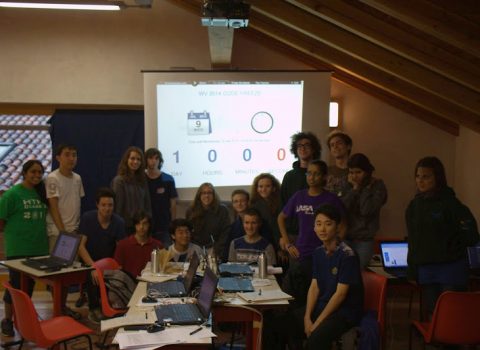 June 15, 2017My memory of WebValley? “It made the difference in my life. I feel priviledged”Davide Leonessi, "Webvallian" of the 2014 edition, studies mathematics at Oxford now.
June 15, 2017My memory of WebValley? “It made the difference in my life. I feel priviledged”Davide Leonessi, "Webvallian" of the 2014 edition, studies mathematics at Oxford now. -
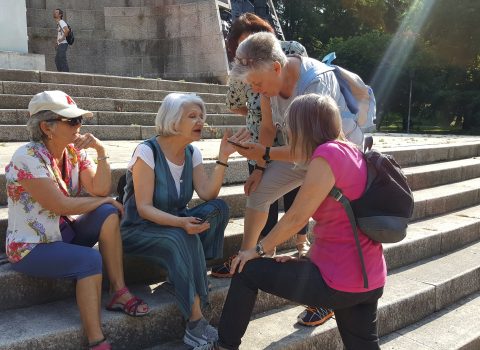 June 1, 2017AWARD-GIVING CEREMONY OF THE “IMPRONTE” (FOOTPRINTS) PROJECT AIMED AT FAVORING ACTIVE AGING AND INCLUSIONA treasure hunt with pedometer bracelets and a geolocation app to hide or find real or virtual objects
June 1, 2017AWARD-GIVING CEREMONY OF THE “IMPRONTE” (FOOTPRINTS) PROJECT AIMED AT FAVORING ACTIVE AGING AND INCLUSIONA treasure hunt with pedometer bracelets and a geolocation app to hide or find real or virtual objects -
April 13, 2017What are the effects of sleep deprivation on people’s health and productivity?A study conducted by researchers at the University of Lugano and the University of Pittsburgh (U.S.A.) reveals interesting implications. Fabrizio Mazzonna, professor of health economics, tells us more.
-
April 12, 2017The Research institute for the Evaluation of Public Policies (FBK-IRVAPP) is seeking a new DirectorThe search for candidates for the position of new director for the humanities center of Fondazione Kessler, who will replace Antonio Schizzerotto, IRVAPP’s Chief officer since its creation in September 2008, started yesterday.
-
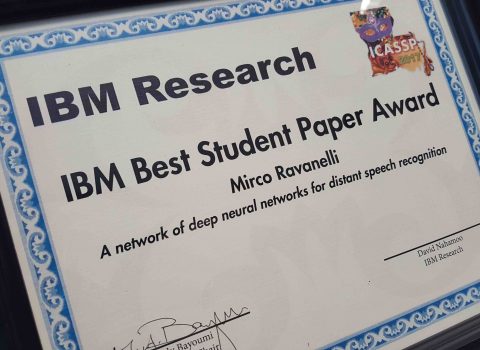 March 31, 2017A Researcher from Trentino awarded at the most important world conference on voice recognitionThe reward of $ 1,500 was awarded to Mirco Ravanelli, first author of the paper by FBK and University of Montreal (Canada).
March 31, 2017A Researcher from Trentino awarded at the most important world conference on voice recognitionThe reward of $ 1,500 was awarded to Mirco Ravanelli, first author of the paper by FBK and University of Montreal (Canada). -
March 13, 2017Sunset Time and the Economic Effects of Social Jetlag. Evidence from US Time Zone BordersFBK-IRVAPP organizes a seminar with Fabrizio Mazzonna (Università della Svizzera Italiana) next March, 23 2017
-
March 3, 2017Il presidente CNR Massimo Inguscio alla Fondazione Kessler di TrentoLo scorso mercoledì 8 febbraio 2017 Massimo Inguscio, presidente del CNR - Consiglio Nazionale delle Ricerche, in visita alla FBK accompagnato dall'assessore PAT Sara Ferrari e dalla dirigente del Dipartimento della conoscenza Livia Ferrario.
-
February 22, 2017FBK ranks 1st in Italy for scientific excellence in three areasExtraordinary primacy in ICT; 1st place in History and Sociology as well. Mr. Profumo: "FBK is a unique case in Italy combining excellence at the top for scientific production and economic return".
-
February 17, 2017A pilot project at Fondazione Bruno Kessler in Trento promotes a healthy lifestyleAT, APSS, INAIL and FBK experiment the "Key to Health" project that aims to promote healthy lifestyles in the workplace and to prevent some of the most common chronic issues.
-
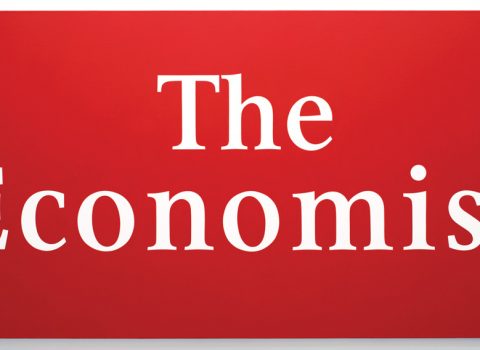 January 30, 2017FBK in “The Economist”Technology of language and religions. Trento-based Fondazione Bruno Kessler mentioned twice this month in the worldwide reknown weekly magazine.
January 30, 2017FBK in “The Economist”Technology of language and religions. Trento-based Fondazione Bruno Kessler mentioned twice this month in the worldwide reknown weekly magazine. -
October 17, 2016National conference on the integration of administration archives with sample surveysThe conference aims to contribute to the growth of the collective awareness of the increasing importance of the integration of micro-data originating from government archives with microdata, particularly on individuals and families, gathered from surveys carried out by ISTAT or other research institutions.